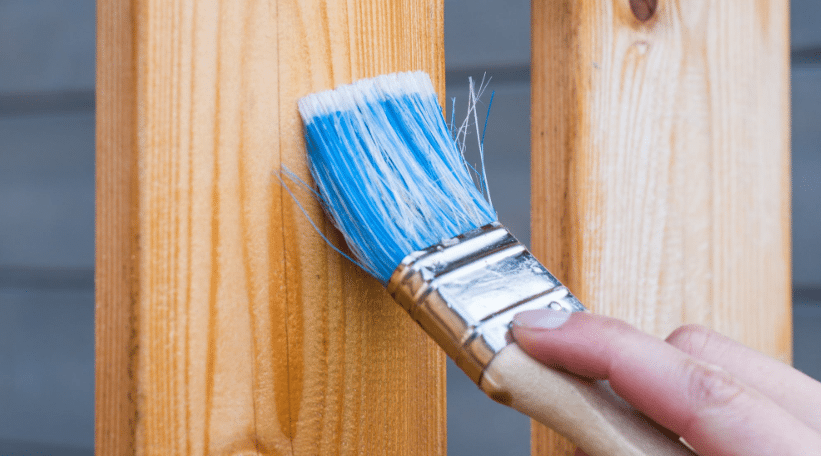How can you keep your home looking spic and span outside? We offer some tips…
By Tammy Adamson-McMullen
Summer is a great time for outside fix-up projects, like painting the exterior of the house, staining the deck, pressure-washing the driveway, repairing fences, spray-painting patio furniture and so on. Once you’ve spruced up the outside, how can you keep it looking that way? Here are some tips for maintaining exterior surfaces well into the fall and beyond.
Exterior Paint
Mother Nature isn’t always kind to our exteriors—even when they’re freshly painted. Keep an eye out for paint that is chalky or darkened by airborne dirt, which can become a breeding ground for mold and mildew. To remove the dirt, scrub it gently with a mild detergent and scrub brush and then rinse the surface thoroughly. Avoid using harsh cleaners, such as TSP, which can harm the finish of alkyd and some latex paints.
If you do get mold and mildew, tackle it as soon as possible. You can make a homemade mixture consisting of 3 parts water to 1 part bleach, which can be brushed or sprayed on the area. (Be sure to wear gloves.) If you tackle the problem soon enough, one application may be enough. Otherwise, you may need to repeat this process.
Spot Imperfections
It’s a good idea to give your exterior a “once-over” from time to time—not just siding or brick facades but also decks, wooden patio furniture and so on—to make sure there is no peeling, blistering, cracking or other imperfections in the paint or stain. By taking care of these problems early, you can avoid larger problems in the future. If you do see a problem, scrape and sand the area. Next, spot-prime and paint it, using light coats and allowing each coat to dry thoroughly before applying the next.
Patios and Driveways
Concrete and masonry surfaces are dirt collectors by their very nature. To keep these surfaces looking spic and span, give them a good washing from time to time. Apply a detergent or masonry cleaner, using a garden sprayer, and work the solution into the surface with a long-handled brush. If the dirt is particularly stubborn, try using a pressure washer instead.
If mold or mildew appears, use the bleach solution and cleaning process mentioned above. You also might try one of the products on the market, such as Wet ‘N Forget, that allow you to put down a solution and then walk away. The solution works over time, with wind and rain, to clean the surface and keep it that way.
Efflorescence
You may not know what “efflorescence” means, but you certainly have seen it. Meaning “flowering out” in French, efflorescence is the chalky substance that accumulates on bricks and masonry when moisture transports salt deposits onto the surface and then evaporates. Efflorescence is mostly a cosmetic problem, but it sure can be unsightly! It often is caused by rain, although it also can be an indication of a water problem somewhere within the structure. Regardless, if left untreated, efflorescence can get worse over time.
If the problem is structural, you may need to call a professional contractor to find the source of the water and address it. Removing the salt deposits, however, is an easier matter. Simply use a wire brush to scrape away the residue, working carefully within the crevices of the masonry. (Be sure to wear a face mask, goggles and gloves for this task.) If the surface originally was painted, spot-prime the area and re-paint it, allowing sufficient time between coats.
High-Activity Areas
Some surfaces are more easily damaged than others. Fences, handrails and porch rails are prime examples since so much activity typically goes on around them. Check these areas from time to time for structural damage, especially before colder weather sets in. Nail or screw down any loose parts. Tackle nicks, scratches, splinters and other blemishes in the coatings by sanding the surface until smooth—especially important with handrails—and then re-stain the area, or spot-prime and paint it.

 Interior Paints
Interior Paints Exterior Paints
Exterior Paints Primers
Primers Stains & Clears
Stains & Clears
 Paint Brushes
Paint Brushes Paint Roller
Paint Roller Paint Trays & Liners
Paint Trays & Liners
